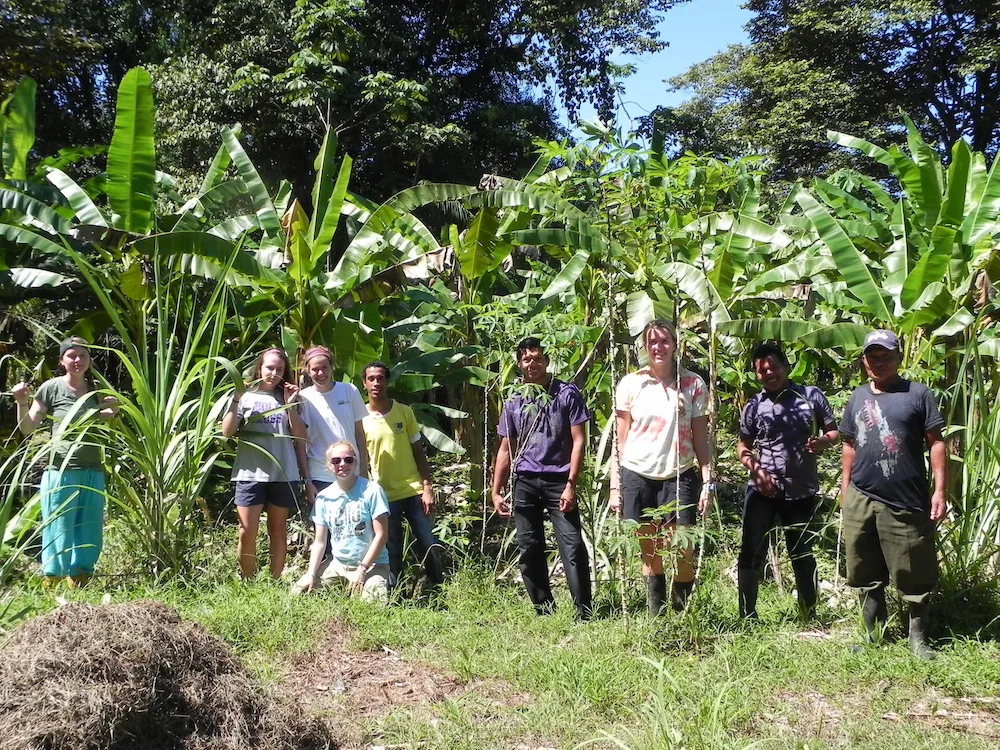Sunshine in the Rainy Season
Somebody’s angels were working overtime during our Directed Research data collection week here in the tropical island paradise of Bocas del Toro! The rainy season was to begin mid-November, and we had braced ourselves for a rainy week in the field. Those angels gifted us almost the entire six days straight (and then some more) of sunny, calm weather, so Dr. Annemarie Kramer’s marine ecology team was able to find their anemone and shrimp associations, and Dr. Mauricio Fernandez Otarola’s “flower group” managed to find the lovely little long-tubed, moth-pollinated Hippobroma longiflora (Campanulaceae) on islands near and far. The third group, the “garden girls”, also island hopped, sampling cacao fruits and coconut water as we interviewed farmers and surveyed their house gardens.

The sunny weather and tropical breeze in the outdoor classroom with the view of the water and mountains on the mainland has made it a little difficult to get those data sets analyzed and interpretations on paper, but our students have been superstars of focus during this write-up week. Well, when they are not processing cacao seeds to chocolate, or planking on the dock.
What are we furiously writing about? In all three Directed Research projects, our students are looking for mutualistic relationships between and among various species, and how those relationships drive evolution (in the case of the little flower and its hawk moth pollinator), determine host specificity (which shrimp species enjoy the protection of which anemone species), or explain farming preferences (do garden composition and function reflect gender, age, or education levels). Our research results were presented in a lively symposium with a diversity of local stakeholders.

We will be sorry to leave our island home, where one of our young neighbors appears every Sunday to sell his aunt’s chocolate products; where we have come to know and love the local youth at the swim dock; and where we are really starting to understand the subtleties of the economic and demographic shifts in the region—from the boom-bust cycle of the banana industry to the influx of foreigners and foreign capital to this fragile ecosystem. These shifting baselines of money and people are reflected in changes we see in the faces in town, in the land use and land cover of the islands, and in the catch from the sea. But we’ll be back next semester. We hope to see you here.
Related Posts


Alumni Reflections: Stories of the Return to Kenya
